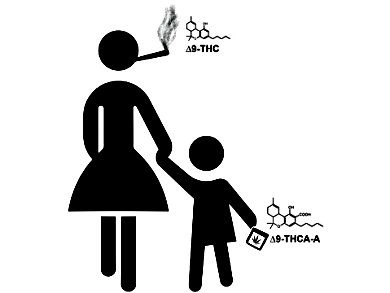Hair analysis for drugs and drugs of abuse is increasingly used in child protection cases. In cases of positive findings it has to be carefully differentiated whether (i) the drug was administered to the child, e.g., for sedating it, (ii) the drug was consumed in the presence of the child leading to passive uptake by the child, or (iii) the drug was consumed in the absence of the child. All scenarios bear different health risks for the child and probably require different approaches from a child-care perspective. However, the differentiation between external contamination and systemic uptake is difficult regarding hair analysis for cannabinoids.
A previous study has shown that Δ9-tetrahydrocannabinolic acid A (THCA-A), the biogenetic non psychoactive precursor of THC, is a suitable marker for an external hair contamination, since it is not incorporated into hair through the bloodstream after repeated oral intake of high doses of THCA-A.
Volker Auwärter, University Medical Center Freiburg, Germany, and colleagues have analyzed hair samples from 41 children and 34 cannabis-consuming parents using methanolic extraction and liquid chromatography-tandem mass spectrometry (LC-MS/MS) analysis as well as applying alkaline hydrolysis and headspace-solid phase microextraction-gas chromatography-mass spectrometry (HS-SPME-GC-MS) or GC-MS analysis, respectively. They found that most of the cannabinoids detected in hair samples from children come from contaminated hands or surfaces and not from inhalation or secondhand smoke.
- Cannabinoid findings in children hair – what do they really tell us? An assessment in the light of three different analytical methods with focus on interpretation of Δ9-tetrahydrocannabinolic acid A concentrations,
Bjoern Moosmann, Nadine Roth, Martin Hastedt, Andrea Jacobsen-Bauer, Fritz Pragst, Volker Auwärter,
Drug Testing Analysis 2014.
DOI: 10.1002/dta.1692




